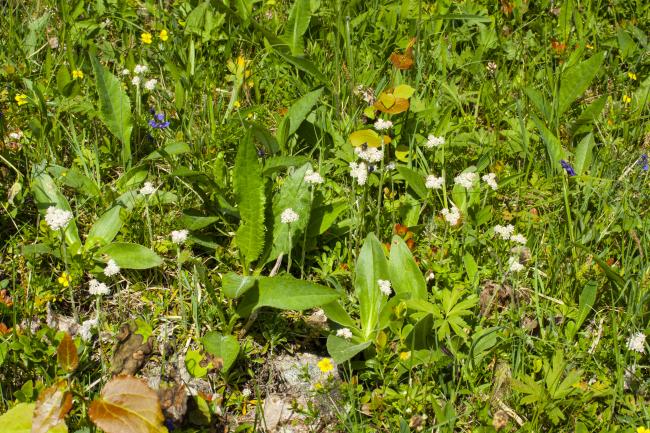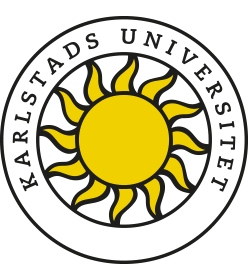Background and project results
Temperate managed grasslands are biodiversity hotspots holding the world record for plant species richness at small spatial scales. The persistence of the grassland biome in temperate Europe since the Pleistocene has resulted in a large species pool of plants, fungi and insects through speciation, co-evolution, and immigration.

A large proportion of the Central and Northern European flora is endemic to temperate grasslands and can only survive in this habitat.
During a long period of low-input agriculture, grasslands represented one of the major underpinnings of man’s socio-ecological system. During the last century, area and quality of grasslands have declined dramatically due to abandonment, afforestation, conversion into crop fields, fertilization and urbanization. As a result, a large number of grassland species have occupied refuge habitats along road verges – narrow vegetation strips along roads that are characterized by similar management as traditional grasslands.
Today, sustainable green infrastructure with well-developed species-rich road verges offers great prospects for compensating the loss of grassland ecosystem services that include habitat and biodiversity, control of agricultural pests, soil stability, water quality, carbon sequestration, nutrient cycling, landscape heterogeneity and aesthetic beauty. In Sweden, road verges with grassland vegetation cover 164 000 ha, which is 37% of the area of all farm-owned pastures and >60 times the remaining area of hay meadows with high conservation value. As linear habitats, road verges increase connectivity in fragmented landscapes. This makes them also prone to colonization by non-native species, which is currently the greatest threat to species-rich road verges. Large, dominant non-native herbs and woody plants close to roads cause increasing problems for traffic safety and road maintenance.
Project results
WP1 is finalized. Our research shows that the root system of the Garden lupine is most exhausted when it is in full bloom. During this phase, the plant invests a lot of resources in the development of the flowers and seed maturation (see figure below). Therefore, we recommend mowing the Garden lupine to be carried out during the flowering period. If you want to read more about our results check here:
Blomqvist, E. L., Klinger, Y. P., Kleinebecker, T., & Eckstein, R. L. (2025). Linking nutrient dynamics and phenology in Lupinus polyphyllus to identify the right timing for population control. Basic and Applied Ecology, i84, 61-68, https://doi.org/10.1016/j.baae.2025.02.006
WP3 is finalized. Our experiments showed that hot steam treatment of soil masses holds significant promise for controlling seeds of Garden lupine. At a temperature of 97 °C for 10 to 17 min, >99% of the seeds in soil were killed. If you want to read more about our results check here:
Blomqvist, E. L., Orlikowska, E. H., Paikert, H., & Eckstein, R. L. (2024). The effects of dry heat and steam on germination of dry and imbibed seeds of the invasive garden lupine (Lupinus polyphyllus Lindl.). Invasive Plant Science and Management 17(2), 95 – 103”. Invasive Plant Science and Management, https://doi.org/10.1017/inp.2024.14
Additionally, there have been a number of publications during recent years dealing with the phenology and ecology of Garden lupine, in which the main PI of the present project was involved.
Phenology
Ludewig, K., Klinger, Y. P., Donath, T. W., Bärmann, L., Eichberg, C., Thomsen, J. G., Görzen, E., Hansen, W., Hasselquist, E. M., Helminger, T., Kaiskog, F., Karlsson, E., Kirchner, T., Knudsen, C., Lenzewski, N., Lindmo, S., Milberg, P., Pruchniewicz, D., Richter, E., … Eckstein, R. L. (2022). Phenology and morphology of the invasive legume Lupinus polyphyllus along a latitudinal gradient in Europe. NeoBiota, 78, 185–206. https://doi.org/10.3897/neobiota.78.89673
Klinger, Y. P., Eckstein, R. L., & Kleinebecker, T. (2023). iPhenology: Using open‐access citizen science photos to track phenology at continental scale. Methods in Ecology and Evolution, 14(6), 1424–1431. https://doi.org/10.1111/2041-210X.14114
Ecology
Eckstein, R. L., Welk, E., Klinger, Y. P., Lennartsson, T., Wissman, J., Ludewig, K., Hansen, W., & Ramula, S. (2023). Biological flora of Central Europe – Lupinus polyphyllus Lindley. Perspectives in Plant Ecology, Evolution and Systematics, 58, 125715. https://doi.org/10.1016/j.ppees.2022.125715
Dániel‐Ferreira, J., Lennartsson, T., Wissman, J., Knudsen, C., & Eckstein, R. L. (2024). Vascular plant diversity in Swedish road verges of high conservation value is threatened by the invasive alien herb Lupinus polyphyllus Lindley. Nordic Journal of Botany, e04438. https://doi.org/10.1111/njb.04438
You can read more about invasive species and transport infrastructure and current knowledge gaps here (in Swedish):
Tschan (2018) Invasiva arter och transportinfrastruktur. VTI rapport 905
Wissman et al. (2015) Invasiva arter i infrastruktur. CBM skriftserie 98
Lennartsson et al. (2021) Kunskapsbrister för hantering av invasiva främmande växter. TRIEKOL rapport


